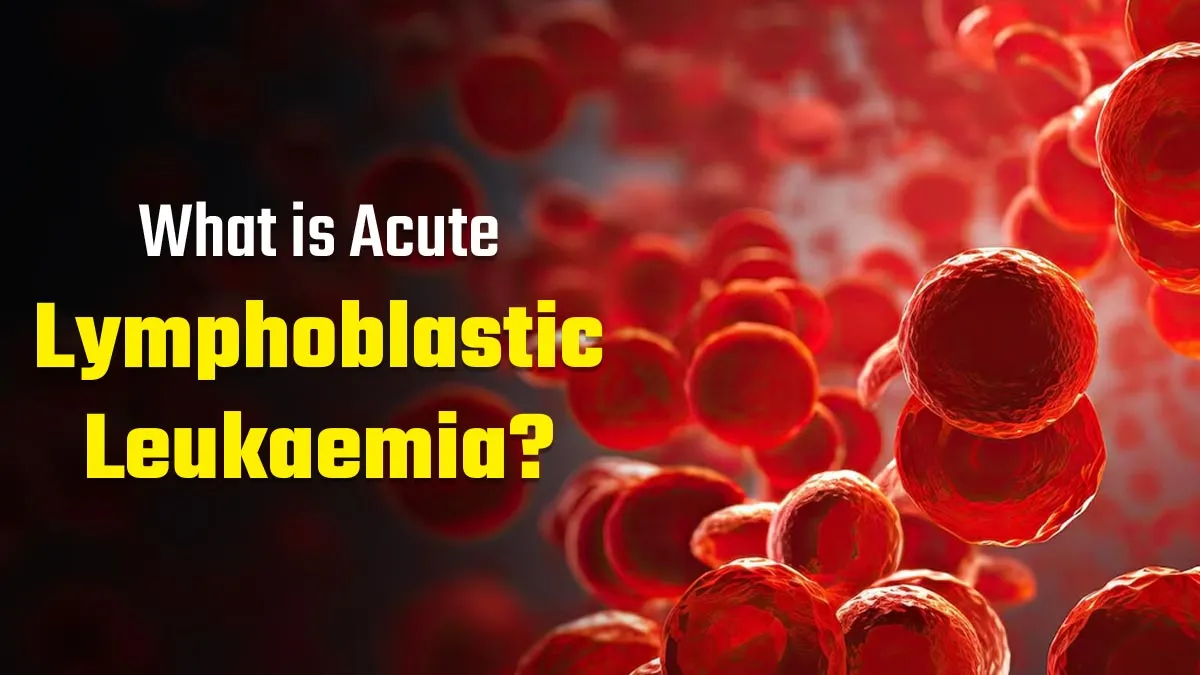
Cancer is a complex and often daunting diagnosis that can affect individuals of all ages, with various forms manifesting in different ways. Among these forms, certain types of leukaemia stand out due to their aggressive nature and the rapid progression of symptoms. One such type is Acute Lymphoblastic Leukemia (ALL), which is characterised by the uncontrolled proliferation of immature white blood cells known as lymphoblasts.
Table of Content:-
This condition can disrupt normal blood cell production in the bone marrow and lead to serious health complications if not addressed promptly. To get more insights on the topic, we reached out to Dr Gopinathan M, Consultant Clinical Hematologist, MGM Cancer Institute, Chennai, to understand its symptoms, survival rates, life expectancy, and treatment options available to those affected.
What is Acute Lymphoblastic Leukaemia (ALL)?
Acute lymphoblastic leukaemia (ALL), also referred to as acute lymphocytic leukaemia, is a severe form of cancer that starts in the bone marrow, where blood cells are produced. This type of leukaemia primarily affects the body's white blood cells, particularly lymphocytes, which are crucial for immune function. According to Dr Gopinathan M, ALL is termed "acute" due to the rapid onset and progression of symptoms, which can develop within days to weeks.
The condition is most prevalent in children but can also occur in adults, affecting their overall health and quality of life. Early detection and treatment are vital for improving outcomes, as ALL can lead to serious complications if not addressed promptly.
ALSO READ: Childhood Leukaemia: Types, Symptoms, and Treatment
Symptoms Of Acute Lymphoblastic Leukaemia (ALL)
Acute lymphoblastic leukaemia (ALL) presents with a range of symptoms that can vary in severity and duration. According to our expert, some of the key symptoms include the following.
- Prolonged Fever: A fever lasting more than two weeks, often without an apparent cause.
- Fatigue: Continued tiredness that does not improve with rest.
- Weight Loss: Unexplained loss of weight that may occur alongside changes in appetite.
- Lymph Node Swellings: Small, swollen lymph nodes in areas such as the neck, armpits, and groin.
- Abdominal Distention: A feeling of fullness or swelling in the abdomen.
- Jaundice: Yellowing of the skin and eyes, indicating potential liver involvement.
- Bone Pain: Particularly common in children, this can manifest as discomfort in the bones or joints.
What Is The Survival Rate and How Long a Person Can Live?
Dr Gopinathan M explains that the survival rate for acute lymphoblastic leukaemia (ALL) largely depends on the age at which the cancer is diagnosed. For children under 18 years old, survival rates are notably high, whereas adults diagnosed with ALL face different challenges due to the distinct genetic characteristics of adult leukaemia compared to pediatric cases.
- For children under 18 years old, survival rates are approximately 90% to 95% with standard chemotherapy treatments.
- Adults diagnosed with ALL generally have lower survival rates, ranging from 60% to 80%.
What is the life expectancy of individuals with Acute Lymphoblastic Leukaemia (ALL)?
The life expectancy of individuals diagnosed with acute lymphoblastic leukaemia (ALL) is influenced by several critical factors. Our expert shares that it includes genetic characteristics of the disease and the patient's response to treatment. Understanding these elements can provide insight into what patients might expect after diagnosis and treatment.
- Genetic Background: The specific genetic markers associated with leukaemia can significantly impact prognosis and treatment outcomes.
- Chemotherapy Tolerance: Patients who tolerate chemotherapy well and have favourable disease characteristics often experience a near-normal life after completing treatment.
- Post-Treatment Recovery: While some patients may face limitations in daily activities due to treatment-related toxicities, many recover over months to years.
- Survival Rates: The curative rates for ALL are approximately 80-85% in children, while adults have survival rates ranging from 60-80%.
- Long-Term Outlook: With advancements in treatment, many individuals can achieve remission and lead fulfilling lives post-treatment, although ongoing monitoring is essential to detect any potential relapses.
Is Acute Lymphoblastic Leukaemia (ALL) Curable?
Acute lymphoblastic leukaemia (ALL) is considered highly treatable, especially in children, where survival rates can reach up to 95% due to advancements in chemotherapy and targeted therapies. Detailing the cure, Dr Gopinathan M shares that in adults, survival rates range from 60% to 80%. Overall, with effective treatment, many patients can achieve remission and lead normal lives, highlighting the curative potential of ALL when managed properly.
Also watch this video
How we keep this article up to date:
We work with experts and keep a close eye on the latest in health and wellness. Whenever there is a new research or helpful information, we update our articles with accurate and useful advice.
Current Version